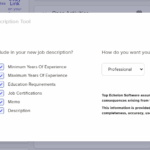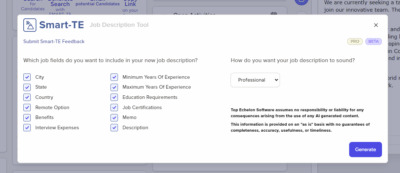In the realm of professional recruiting, effective communication is the cornerstone of success. It’s not just about what you say, but equally, if not more importantly, about how you listen. Active listening, a skill often overlooked in the fast-paced world of recruitment, is a powerful tool that can elevate your practice to new heights.
Considering how important is it, we shall now explore the art of this listening technique. We will explore its significance, techniques, and practical applications in the context of recruiting.
Understanding the Significance of Active Listening
Among the myriad of communication skills, active listening stands out as a cornerstone for success. At its essence, it transcends mere hearing. Instead, it embodies a profound commitment to understanding, engaging, and empathizing with candidates and clients alike.
Let’s dive deeper into the significance of active listening within the context of recruitment.
The Essence of Active Listening
Active listening isn’t merely about hearing words spoken during a conversation. It’s about immersing oneself in the speaker’s message, understanding the underlying emotions, and responding thoughtfully.
In recruitment, active listening involves more than just matching skills and qualifications. It’s about grasping the motivations, concerns, and aspirations of candidates and clients.
Building Trust and Rapport
Trust is the bedrock of any successful professional relationship, and it begins with effective communication. When candidates and clients feel genuinely heard and understood, trust naturally follows.
Active listening signals to them that you value their input, respect their perspectives, and are genuinely committed to their success. This trust forms the foundation of a productive partnership, fostering collaboration and mutual respect throughout the recruitment process.
Uncovering Motivations and Concerns
Recruitment goes beyond filling a position. It’s about aligning values, goals, and aspirations. Active listening enables recruiters to delve beneath the surface, uncovering the deeper motivations and concerns driving candidates and clients.
By empathizing with their perspectives and understanding their unique challenges, recruiters can provide tailored solutions that address their individual needs. This deeper level of understanding not only enhances the candidate experience, but it also ensures better alignment between candidates and clients.
Ultimately, this leads to more successful placements.
Facilitating Better Decision-Making
Recruitment decisions carry significant weight, impacting both candidates’ careers and clients’ organizations. Active listening empowers recruiters to gather all relevant information, weigh various factors, and make informed decisions that drive positive outcomes.
Whether it’s identifying the best candidate for a role or advising a client on strategic hiring decisions, active listening ensures that decisions are based upon a comprehensive understanding of the situation. This reduces the risk of misalignment or dissatisfaction down the line.
Once again, this leads to more successful placements and stronger client relationships.
Techniques for Practicing Active Listening
Active listening is the bedrock upon which fruitful relationships with candidates and clients are built. However, it is not merely a passive act. It requires deliberate practice and the incorporation of specific techniques into one’s communication toolkit.
Let’s explore these techniques and how they can enhance your ability to engage in active listening:
Maintain Eye Contact and Open Body Language
Non-verbal cues often speak louder than words. Maintaining eye contact and adopting open body language signals to the speaker that you are fully present and attentive.
It fosters an environment of trust and encourages the speaker to express themselves more freely. By establishing visual connection, you create a conducive atmosphere for meaningful dialogue and engagement.
Paraphrase and Reflect
One of the most effective ways to demonstrate your listening skills is by paraphrasing and reflecting back what the speaker has said. This not only confirms your comprehension, but it also allows the speaker to clarify or expand on their thoughts if necessary.
Paraphrasing serves as a valuable opportunity to ensure alignment and avoid misunderstandings. It shows that you are actively processing the information and are genuinely engaged in the conversation.
Ask Open-Ended Questions
Open-ended questions are powerful tools for eliciting deeper insights and fostering meaningful dialogue. By asking questions that begin with “what,” “how,” or “why,” recruiters can encourage candidates and clients to share their thoughts, experiences, and aspirations in greater detail.
This enables you to dive beneath the surface and uncover valuable insights that may not have surfaced otherwise. Open-ended questions also demonstrate your genuine interest in understanding the speaker’s perspective, fostering trust and rapport in the process.
Practice Empathy
Empathy lies at the heart of active listening. It is the ability to understand and share the feelings of another. Put yourself in the shoes of your candidates and clients, acknowledging their emotions and perspectives without judgment.
By demonstrating empathy, you create a supportive and collaborative environment where individuals feel valued and understood. This fosters deeper connections and strengthens relationships, ultimately enhancing the recruitment process.
Minimize Distractions
In today’s digital age, distractions abound, making it challenging to maintain focus during conversations. Minimizing distractions is essential to effective active listening. Silence notifications, close unnecessary tabs or applications, and dedicate your full attention to the speaker.
Show respect for their time and input by being fully present in the moment. By eliminating distractions, you can fully engage in the conversation and demonstrate your commitment to the dialogue.
Practical Applications in Recruiting
We’ve explored the significance of active listening and techniques for practicing it. Now, let’s examine how these principles can be applied in real-world recruiting scenarios.
We will explore three such scenarios: candidate interviews, client consultations, and negotiations and offer discussions.
Candidate Interviews: Unlocking Potential Through Active Listening
Candidate interviews are the cornerstone of the recruitment process, offering a critical opportunity to evaluate qualifications, assess cultural fit, and understand career aspirations. Active listening is essential during these interactions, as it allows recruiters to glean valuable insights from candidates’ responses.
By actively listening to candidates’ responses to questions, recruiters can go beyond surface-level assessments and probe deeper into their experiences and motivations. This not only helps in evaluating their suitability for the role, but it also enables recruiters to identify candidates who align with the organization’s values and goals.
Active listening during candidate interviews also empowers recruiters to tailor their approach and present opportunities that resonate with candidates’ career aspirations. By understanding candidates’ goals and motivations, recruiters can position roles in a way that highlights their relevance and potential for growth, increasing the likelihood of successful placements.
Client Consultations: Building Trust and Alignment
Client consultations are pivotal moments in the recruitment process, where recruiters gain insights into hiring needs, organizational culture, and strategic objectives. Active listening plays a crucial role in these interactions, allowing recruiters to understand clients’ requirements and concerns fully.
By actively listening to clients’ perspectives, recruiters can tailor their search strategies to meet their specific needs and preferences. Whether it’s identifying key skillsets, cultural fit criteria, or strategic goals, active listening enables recruiters to gather the necessary information to deliver targeted recruitment solutions.
In addition, active listening fosters trust and alignment between recruiters and clients. By demonstrating a genuine interest in understanding clients’ objectives and challenges, recruiters can build rapport and credibility. This lays the foundation for a productive and collaborative partnership throughout the recruitment process.
Negotiations and Offer Discussions: Finding Common Ground
Negotiations and offer discussions are critical stages in the recruitment process. This is where recruiters must address concerns, manage expectations, and reach mutually beneficial agreements. Active listening is vital during these interactions, as it enables recruiters to identify common ground and facilitate productive discussions.
By actively listening to both candidates and clients during negotiations, recruiters can gain insights into their priorities, preferences, and potential areas of compromise. This allows recruiters to explore creative solutions and develop tailored proposals that meet the needs of all parties involved.
Moreover, active listening during negotiations helps recruiters manage expectations effectively and mitigate potential conflicts. By understanding candidates’ and clients’ concerns, recruiters can proactively address issues, manage risks, and ensure a smooth and successful outcome for all parties involved.
Active listening is a fundamental skill that underpins success in real-world recruiting scenarios. By prioritizing active listening and incorporating techniques into your firm, you can build trust, uncover insights, and make informed decisions that benefit both candidates and clients.
Embrace the art of active listening, and watch as your recruiting efforts flourish in meaningful and impactful ways!








